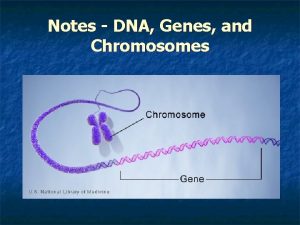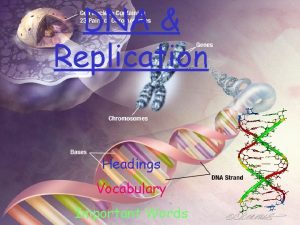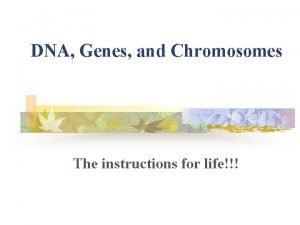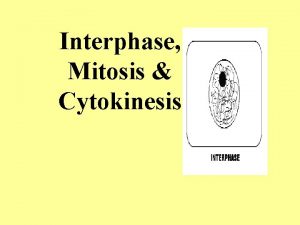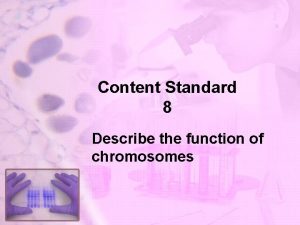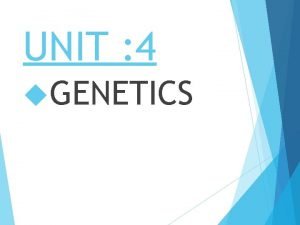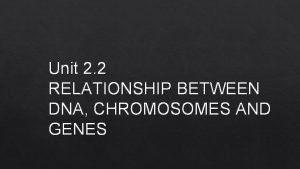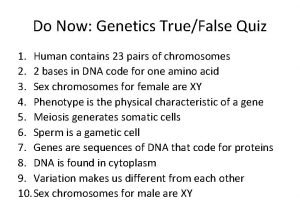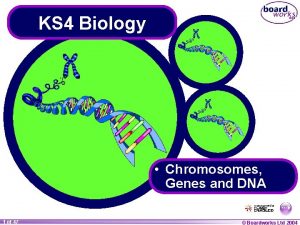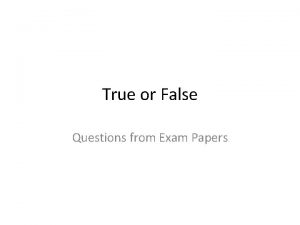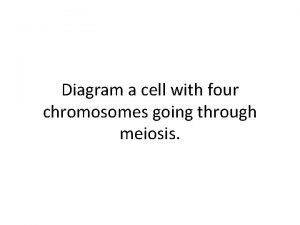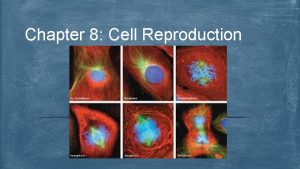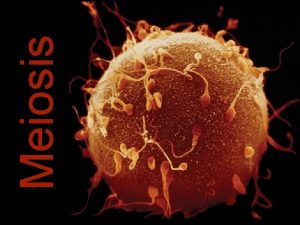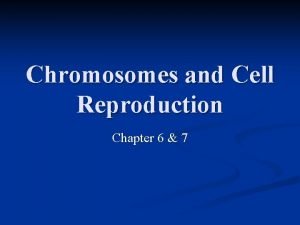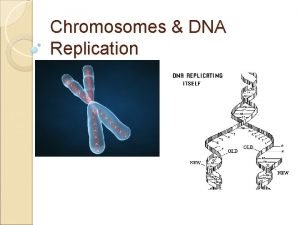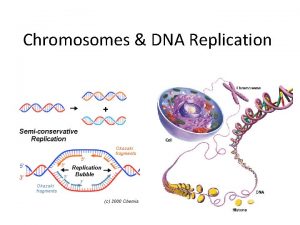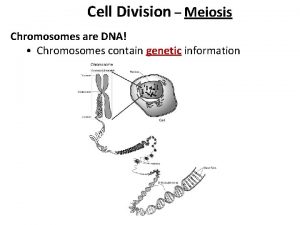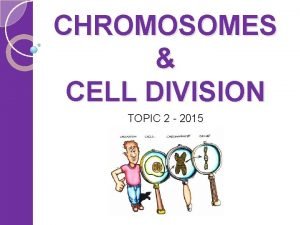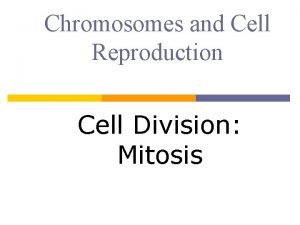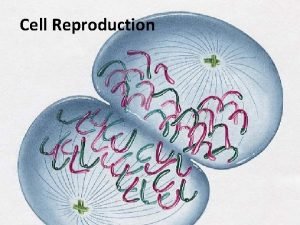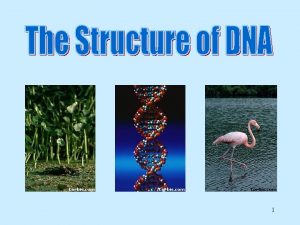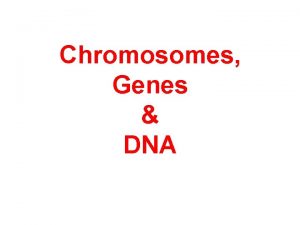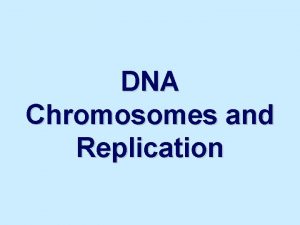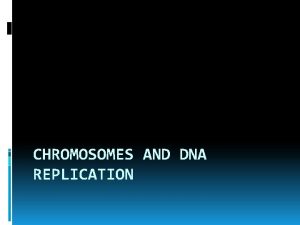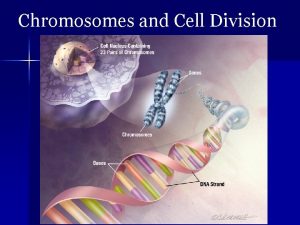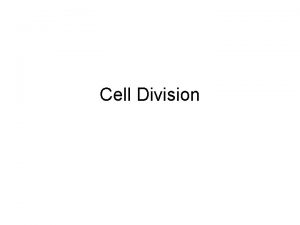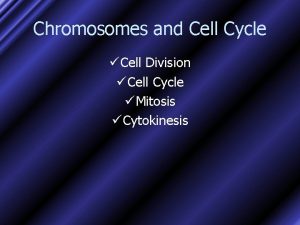CELL DIVISION Ch 8 Chromosomes Made of DNA

















- Slides: 17

CELL DIVISION Ch 8

Chromosomes Made of DNA Carries cell genetic information 23 pair Differs for different organisms fruit fly: 8 Carrot: 18

chromosomes Before a cell can divide it must duplicate DNA Each chromosome consists of identical sister chromatids Since they are identical, where will each one go? One goes to each new cell Each pair of chromatids are attached at centromere Usually located near the middle of chromosome


Cell cycle Series of events that cells undergo as they grow and divide During cell cycle the cell: Grows Prepares for division Divides to form 2 daughter cells, each of which will re-enter into cell cycle

Cell cycle Interphase: “in-between” period of growth Time 1. 2. 3. spent Between divisions Cycle consists of 3 phases: G 1 S G 2

Cell cycle: G 1 (growth) Most of the growing Synthesize proteins

Cell cycle: S phase Chromosomes get replicated Synthesis of DNA When completed, cell completes remainder of cycle

Cell cycle: G 2 Shortest of phases Cells prepare for division Organelles reproduced Molecules needed for replication created

Mitosis 1. 2. 3. 4. Mitosis: process in cell division where nucleus divides Divided into 4 stages Prophase Metaphase Anaphase Telophase

prophase 1. 2. 3. 4. 5. First and longest phase Chromosomes become visible Centrioles separate and move to poles Centrioles help organize mitotic spindle (spindle apparatus): fanlike microtubule structure that helps separate chromosomes Chromosomes attached to fibers in spindle at the centromere Nuclear envelope breaks down

metaphase 1. Chromosomes line up in middle of cell

anaphase 1. Each sister chromatid separates and becomes an individual chromosome Centromeres split Chromosomes continue to move until they are in opposite poles

telophase 1. 2. 3. Chromosomes uncondense Spindle breaks apart Nuclear envelope reforms Essentially, the opposite of prophase

cytokinesis Separation of cytoplasm and its contents In animal cells, membrane is squeezed in the middle until 2 cells are formed Cleavage furrow In plant cells, a cell plate will form This will eventually become the cell wall


Uncontrolled cell growth Cancerous cells do not respond to signals that regulate growth of most cells Divide uncontrollably tumor Cells can break lose and travel to other parts of body Metastizing Causes can be genetic or environmental Effects depend on affected tissue
 Events of the cell cycle
Events of the cell cycle Cell cycle and cell division
Cell cycle and cell division Cell cycle phases
Cell cycle phases Dna, genes and chromosomes relationship
Dna, genes and chromosomes relationship Building vocabulary: the nucleus, dna, and chromosomes
Building vocabulary: the nucleus, dna, and chromosomes Dna, genes and chromosomes relationship
Dna, genes and chromosomes relationship Dna scrunches up and chromosomes are first visible
Dna scrunches up and chromosomes are first visible Chromosomes/dna function
Chromosomes/dna function Genes chromosomes dna
Genes chromosomes dna What is the relationship between dna chromosomes and genes
What is the relationship between dna chromosomes and genes Dna chromosomes genes diagram
Dna chromosomes genes diagram What are chromosomes made of
What are chromosomes made of Chromosomes are made up of
Chromosomes are made up of Result of mitosis
Result of mitosis Diploid vs haploid number
Diploid vs haploid number Two daughter cells were formed
Two daughter cells were formed Chapter 6 chromosomes and cell reproduction
Chapter 6 chromosomes and cell reproduction Dna polymerase function in dna replication
Dna polymerase function in dna replication



